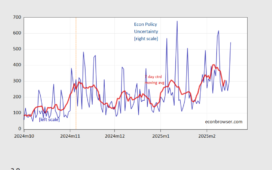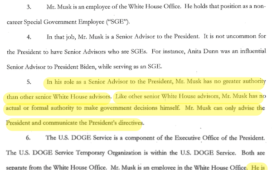Yves here. While many women are legitimately upset about the loss of abortion rights under Roe v.Wade, it’s pretty disingenuous to depict the Democrats as stauncher defenders of abortion rights. Like “fighting” for workers when the Dems presided over an erosion of organizing rights (which could have been bolstered by legislation) and perilous little effort on raising minimum wages, there’s been a long and marked gap between Democratic party virtual signaling and action on the abortion front.
Let’s start with an issue this article skips over: that by pushing ballot initiatives on the state level, the Dems look not even to be considering national abortion legislation. Yet in Europe, most states that provide for abortions have made these protections a matter of law. The Democrats did nothing to secure abortion right when it would have been politically uncontroversial, in the era of peak feminism, the 1970s, or at the start of Obama’s first term, when the desperation over the financial crisis and the filibuster-proof majority gave him a once-in-century opportunity to pass all sorts of sweeping reforms, not just related to finance. He punted instead.
Mind you, feminist activists in the 1970s were just as culpable. They focused on the sure to be unattainable Equal Right amendment, rather than security the most important elements, equal pay for equal work, and solidly securing abortion rights, which could have been done much more easily via new laws. But then what would happen to all those donations when the “fight” was won?
Another ground for criticizing Dems and disingenuous feminists is the packing of the Federal bench with conservatives. Where were feminists when the Dems supported these appointments, which they did in the overwhelming majority of cases? I don’t recall a peep about this, even though the clear intent was to advance a whole host of right-wing agenda items, including on “the right to life”. So even though Trump fell in with the anti-abortion types after being pro-abortion before he won the Republican nomination in 2016, it’s misleading to depict the loss of Federal abortion rights yet another Hair Furore evil. This change came about as a result of a decades-spanning campaign.
And for families struggling to make their money last to the next paycheck, or choosing between paying the rent or for gas, abortion rights are a comparative luxury. Poverty rose markedly under Biden, and voters made clear that the economy and immigration (which is perceived to affect pay rates and the cost of rental housing in communities with a noticable increase) were their top issues.
By Susan Varney, previously a senior correspondent for KFF Health News. Originally published at KFF Health News
Voters in three states — Arizona, Missouri, and Nevada — chose on Tuesday to advance protections for abortion rights in their state constitutions. Donald Trump, meanwhile, is likely to win all three states in his victorious bid for the White House.
It’s a conundrum for Democrats, who expected ballot initiatives on abortion rights in those states to boost the prospects of their candidates, including Vice President Kamala Harris. But data from VoteCast, a large survey of U.S. voters conducted by The Associated Press and partners including KFF, found that about 3 in 10 voters in Arizona, Missouri, and Nevada who supported the abortion rights measures also voted for Trump.
“We saw lots of people who voted in favor of abortion access and still voted for Donald Trump,” said Liz Hamel, director of Public Opinion and Survey Research for KFF, a health information nonprofit that includes KFF Health News.
VoteCast is a survey of more than 115,000 registered voters in all 50 states conducted between Oct. 28 and Nov. 5. It’s intended to be “the most accurate picture possible of who has voted, and why,” according to the AP.
About 1 in 4 of the polled voters said abortion was the “single most important” factor to their vote, though that number was higher among Democrats, young women, Black adults, and Hispanic adults.
Abortion rights referendums passed in seven states on Tuesday, including Missouri and Arizona, where state bans were overturned. Vice President Kamala Harris made reproductive rights a cornerstone of her campaign, but the VoteCast results reinforce earlier surveys that indicated economic concerns were the foremost issue in the election.
Tuesday’s was the first presidential election since the U.S. Supreme Court’s conservative majority overturned Roe v. Wade. During Trump’s first term as president, he nominated three Supreme Court justices who later joined the 2022 ruling that eliminated women’s constitutional right to abortion care.
Mike Islami, 20, voted for Trump in Madison, Wisconsin, where he’s a full-time student. He said abortion is “a woman’s right” that “was definitely in the back of my mind” when he cast his ballot.
“I don’t think much is going to change” about abortion access during Trump’s second term, he said. “I believe his policy is that he’s just going to give it back to the states and from there they could decide how important it was.”
The survey found that the percentage of voters who said abortion was the most important factor in their vote was similar in states that had abortion measures on the ballot and states without them.
When voters cast their ballots, they were more motivated by economic anxiety and the cost of filling up their gas tanks, housing, and food, according to the survey results. Trump won those voters as much in hotly contested states such as Pennsylvania and Wisconsin as in reliably red states.
Glen Bolger, a Republican campaign strategist, said the 2022 election results demonstrated that Republican candidates are better off talking about the economy and the cost of living than they are about abortion.
This year, Trump voters who supported abortion rights amendments may have decided to take Trump “at his word that he was not going to support a national ban,” Bolger said. In casting their vote for Trump, he said, those supporters may have thought, “Let’s elect him to deal with the cost of living and health care and gasoline and everything else.”
The VoteCast survey found stronger support for abortion ballot initiatives from female voters: 72% of women in Nevada, 69% in Arizona, 62% in Missouri.
Erica Wallace, 39, of Miami, voted for Harris and in favor of an abortion rights ballot measure in Florida, which fell just short of the 60% threshold needed to amend the state constitution.
“As a grown woman, you’re out and you’re working, living your life,” said Wallace, an executive secretary who lives in Miami. She said the state’s ban, which criminalizes abortion care before many women know they’re pregnant, amounts to unequal treatment for women.
“I pay my taxes. I live good,” she said. “I’m doing everything every other citizen does.”
Men were more likely to vote against protecting abortion rights. Men voted 67% in Nevada, 64% in Arizona, and 55% in Missouri for the abortion rights ballot initiatives.
The VoteCast survey found that, overall, voters believed Harris was better able to handle health care. That is consistent with the long-standing view that “Democrats traditionally have the advantage on health care,” Hamel said. Still, Trump outperformed Harris among more than half of voters who said they were very concerned about health care costs.
Family premiums for employer-sponsored health insurance rose 7% in 2024 to an average of $25,572 annually, according to KFF’s 2024 Employer Health Benefits Survey. On average, workers contribute $6,296 annually to the cost of family coverage.
“Everybody is impacted by high health-care costs, and nobody has a solution to it,” Bolger said. “That’s something voters are very frustrated about.”
Florence Robbins in Madison, Wisconsin, and Denise Hruby in Miami contributed to this report.













